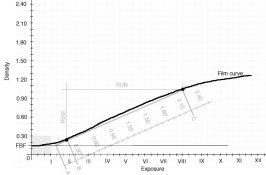Jorge said:
You are confusing density range (DR) with CI. Contrast Index, to explain it simply is the slope of the straight part of the H&D curve. The trick, and where manufacturers dont agree is what two points to use to determine the slope. So Kodak does it one one, Ilford does it another way, but they are both pretty close.
Density range is the spread between the shadow with detail and the highlight with detail as read with a densitometer. For example, if your shadow with detail has a value of .45 and your highlight has a value of 1.9 then your density range is 1.45....
LOL - Not surprised Jorge, am the first to admit that I am confused.

But then, just spent the past week in a class on object oriented analysis and design (geek speak) - three semester's in a 5 days..whew!
If I understand what you are saying, is the DR is you take a densitometer reading of the shadows of the negative (my guess would be the one you metered when you determine the exposure), then read the highlights (same as used for the inital metering) and then do the math to find you DR. Right?
From what I have read, this is also, how you BTZS guys read a scene to get your SBR - Ok, there is more to it than that, but this is part of it - right?
Jorge said:
Thanks for the offer Mike, I might take you up on it and have you help me reship paper, ordering straight from B&S is just too expensive and they refuse not to include an invoice which has shipping charges on it. Mexican customs bases their import tax on the price of the item plus the shipping charge.....what a scam!
Not a problem buddy, would be happy to help out any way I can. Buying materials should not be this much a PIA, no matter where you live.
colrehogan said:
Glad you asked the question, Mike. I've been having the same problems. I have read that part of the BTZS book, but don't understand all that it says yet. I'll have to keep working on it.
Thanks Diane, it really helps to know I'm not the only one that is confused.
But with all the good folks here, I know we will get this down and get on to more serious things like shooting/printing and of course hanging these nice new prints on the wall...after all the main reason I am doing this is so that I can put something up I can really be proud of.
ann said:
check with Lee, i sent him some stuff that Richard Knoppow sent to me, it might help.
You are not the only one tht stuggles with this lol
Thanks Ann, will be visiting with Lee at the DR - with densitometer in hand later this morning, your timing is perfect.
You know if I did not think this was all worth it, I really would not do it...but have seen enough difference in peoples work here before and after they tamed the process that I firmly believe it is worth the effort.
Thanks to everyone for you input...







